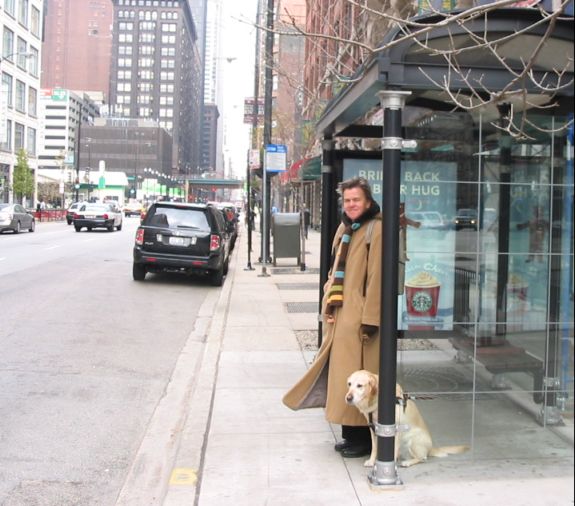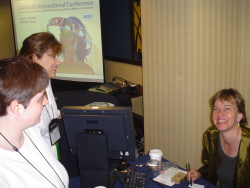Sit Stay Read! on NBC TV
August 7, 2008 • 6 Comments • Posted in Uncategorized, Writing for ChildrenA literacy organization Hanni and I volunteer with in Chicago was featured on the What Works segment of NBC Nightly news Monday evening.
Hanni and I got involved with Sit Stay Read! (SSR) after meeting the Executive Director and co-founder at a book signing last Fall. She keeps a blog about SSR and reports that their mailbox is flooded with good wishes and inquiries from folks all over the WORLD (hello Melbourne!) who saw the feature and are eager now to bring Sit Stay Read programs to kids in their cities.
The Sit Stay Read! web site explains the program like this:
Reading aloud is a critical component of early childhood literacy. Children who have difficulty reading have an especially hard time reading aloud in front of peers and adults. SIT STAY READ programs allow children to read aloud to specially trained therapy dogs. The dogs increase confidence and generate excitement.
The SSR director asked if Hanni and I might want to be Guest Readers/listeners at a Sit Stay Read school program in the Chicago Public Schools sometime. “Our kids would be thrilled to hear you, “she said. They’ve had opera singers, firefighters, poets and other professionals as guests, she said. “You and Hanni would be a wonderful addition.”
Who could resist a pitch like that? We said yes, and in March Hanni and I visited Hendricks Elementary School on Chicago’s south side. Hanni and I had just been to a very wealthy school district in the Chicago suburbs the week before, and the contrast was striking. One thing that was similar in both schools, though: the kids had the same curiosity, and they asked similar questions. You know, things like “How do you know if it’s time to wake up?” and “Is it scary being blind?”
Hendricks is located near White Sox Park, and since Safe & Sound has an illustration of Hanni and me watching a ballgame, the kids had all sorts of questions about that. “What if you got hit by a ball?” I told them we try to sit under netting. “What if there’s a hole in the net?” I told them Mike usually comes with us to ballgames, so he warns me if a ball is coming. “What if he is going to get hot dogs so he isn’t there and the ball comes?” the ballgame questions went on and on. And it was really, really fun.
My publisher at Blue Marlin Publications watched the Sit Stay Read! segment on NBC from their home on Long Island. Her son Jude Tucker watched it with her, and he was sure the boy on the segment was reading Hanni and Beth: Safe & Sound — even though he could only make out a blue back cover! Gotta love my supportive fans on Long Island!



